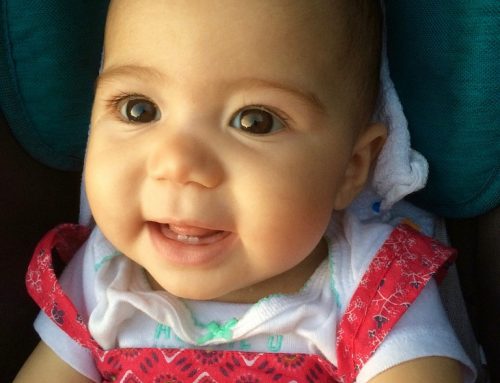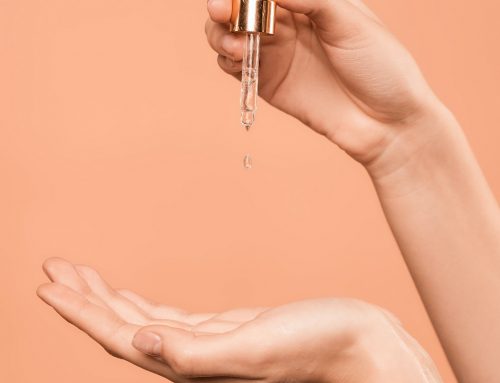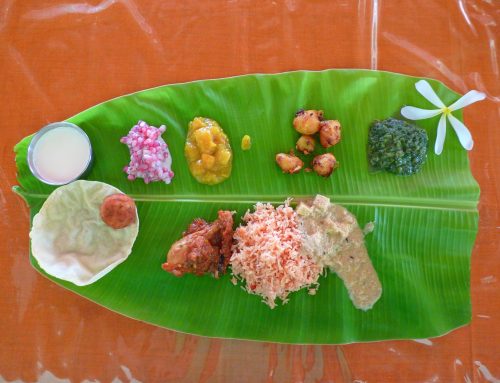At around six months of pregnancy, my nesting instincts kicked into overdrive. Suddenly, I was sweeping the house with a fine-tooth comb, and cleaning dark, neglected corners with a toothbrush. I ran out of detergent pretty quickly and rushed out to buy more in a mid-cleaning spree. While strolling through the supermarket aisles with a heavy belly, I passed by rows and rows of products that promise to clean my home and safeguard my family’s health and hygiene. But somehow, my gut felt differently. My maternal instincts sprung to life, and I was struck by a bolt of lightning. Were these cleaners and skincare products really safe for my baby? I rushed home and spent the next few hours obsessively looking up the ingredients on google. There were so many strange chemical-sounding words in them. Words that came with warnings and safety instructions. If we adults had to be so careful, what happens when a tiny, helpless baby with a still-developing immune system comes in contact with them? It’s a spine-shuddering thought. Which is why it was time to make some changes.
It’s a crazy, toxic world we live in
There are pollutants all around us. And I’m not even talking about dangerous fumes released by factories or cars. I’m talking about hazardous substances found in our homes every single day. There are 45 such toxic chemicals in most Indian homes. You’ll find them in household cleaning supplies, personal-care products and even in our kitchen. These chemicals are dangerous for adults, so can you imagine their effect on kids?
Here’s the irony. In our over-enthusiastic bid to protect our kids from contamination, we overuse these chemical-induced disinfectants and personal care products. Your child has a very little defence mechanism in place to deal with the threat these alien toxins carry. And when that human body is brand new, tiny with a still-developing immunity, you can imagine the horror.
Baby steps to reduce the number of toxins in daily life
1. Cut down on plastic
It’s the single most popular invention of the 20th century, and its widespread usage is wrecking the planet, our homes, and our children’s health. As we all know by now the sad truth, plastic is non-biodegradable and contains toxins. Which means every bit of plastic anyone has ever used will remain on this planet for centuries. Think of all the toothbrushes you’ve ever used, from childhood to this day. And while it’s waiting, it will slowly break down and release toxins into the air. In a way, we have already given our kids a gloomy, gritty plasticky earth to inherit.
But plastic can affect your life as you use it. Most children’s toys and baby bottles are made up of chemicals like phthalates and BPAs. When scratched, bitten or heated, those chemicals can break down, separate and get ingested. Once they find their way inside your baby’s internal system, the damage over time can become quite severe. While there are some baby products that are BPA-free or phthalate-free,
Here is a list of baby items that are widely available in plastic:
- Feeding bottles
- Sterilizer
- Spoons/feeding utensils
- Sippy cups
- Diapers
- Wet wipes
- Waterproof changing tables and mattress liners
- Synthetic fabrics
- Pacifiers
- Baby rockers/strollers/high chairs/car seats
- Teething and regular toys
While the India government has passed regulations to monitor the levels of chemicals in baby-related products, the execution of these laws seems difficult. While private laboratories have tested the alarming levels of toxins and published their findings, there is no law that can prohibit companies from further manufacture. Cheap, China-made plastic toys continue to wash up on our shores at prices too tempting for parents to resist. But the real cost is your child’s welfare. And that is not something you want to bargain with.
How to reduce your baby’s plastic consumption
- Swap disposable diapers for cloth ones (link to our cloth diaper post)
- Use glass, stainless steel or ceramic-based utensils and bottles
- Store all ingredients for baby food in glass/steel jars
- Use cloth-based wipes, linen or muslin cloth
- Avoid waterproof items and use layers of cloth instead
- Offer a chilled carrot stick instead of plastic teether
- Look for wood, metal or cloth-based solutions for baby furniture and toys
- Opt for organic cotton or natural fibres wherever possible
- Opt for steel straws, or avoid straws altogether. Babies will learn to drink from a steel vati directly.
- When shopping for fruits and vegetables for your baby, avoid plastic bags and use cloth ones instead.
2. Reduce toxic chemicals in your baby’s products
Don’t trust those heartwarming baby-products advertisements. Companies can scream from the roof-tops about how ‘safe’ their products are for your baby. But that doesn’t mean they are. You need to be sure. You need to check if that brand of shampoo, soap or nappy cream contains harmful chemicals that will affect your baby.
Toxic vocabulary:
If you read any of the following chemical’s name on the product you’re about to buy, drop the bottle and run in the opposite direction. Following are a few of the most commonly used chemicals in the market today that are hazardous for your kids.
Phthalates
Found in: children’s toys, most plastic products like cling wrap, containers, bottles and products that contain ‘perfume’ or ‘fragrance’.
Can cause: endocrine disruption, developmental defects, liver, and kidney failure in kids who chew on toys containing this chemical
Bisphenol A or BPA
Found in: plastic baby bottles, plastic baby utensils
Can cause: early puberty in girls, fertility problems in both genders and cancer
Parabens
Found in: baby personal care products like shampoos, creams and soaps
Can cause: skin rash, hormone disruption, also linked to cancer
Flame retardants
Found in: baby car seats, bed sheets, mattresses, and foam-based baby products
Can cause: delayed puberty, hormone disruption, fertility issues, and cancer
Formaldehyde
Found in: baby shampoos and body wash
Can cause: skin irritation, cancer
Some of the bigger brands do claim to be free of these harmful chemicals. But you can never be too sure. You’ll see signs on the packaging that state ‘BPA-free’ or ‘paraben-free’. However, according to a study conducted on toxic chemicals in baby bottles, BPA has been detected in a bottle brand that has been advertised as BPA-free. The study also showed that “50% of BPA-free samples, traces of the harsh chemical was still detected. So what’s a concerned mother to do?
How to reduce your baby’s chemical consumption:
- Always wash new baby clothes before wearing as some of the chemicals used in the factory may linger on the fabric.
- Use safe, toxin-free detergent to wash your child’s clothes. Brands like
- Azafran liquid detergent
- Bubblenut wash
- Greenworx Ultra Laundry Powder
- Switch to personal care products that are organic and toxin-free. Brands like:
- Avoid buying plastic toys, especially the ones which need batteries
- If a plastic toy gets scratched or chewed on, take it out of your home and give it for recycling
- Request friends and family who want to gift toys and clothes to your child to avoid plastic and synthetic materials.
- Read the label of baby products before you buy them. If there is no label, research the product online. Not all chemical-sounding words are bad for your baby. A quick google search can reveal the good from the bad.
Conclusion
It can be a bit overwhelming to protect your child from the toxic dangers prevalent in our chemical-ridden society. But it’s not impossible. Take a deep breath and take it to step by step. Once you’ve educated yourself about the various chemical hazards threatening your child, you take work towards eliminating them and replacing them with a healthier substitute.
Hold on, we’re not done yet. There are still more toxic chemicals that you need to know about that can affect your child. Look out for Part Two.






Leave A Comment